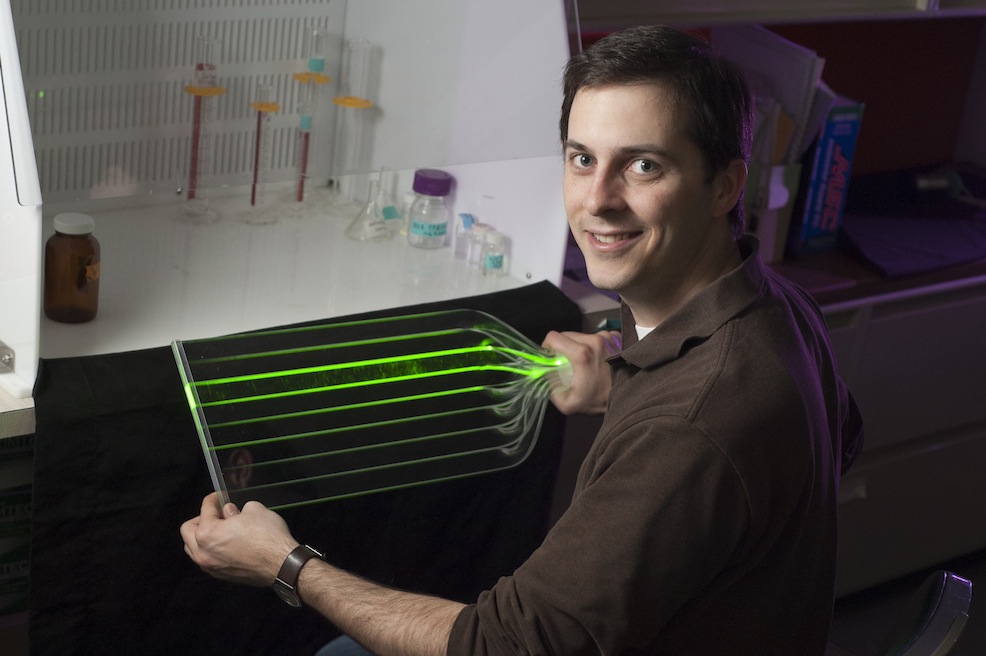
We are developing a new light detection system for LArTPCs that employs light guides. In liquid argon, scintillation light is produced when charged particles in the event produce excimers that proceed to radiate 128 nm ultraviolet (UV) photons. The UV light must be shifted to the visible before detection. Our new system would replace the MicroBooNE-style systems that are commonly used in LArTPCs.
To produce light guides, we coat acrylic bars with a wavelength-shifting material that matches the index of refraction of acrylic. When 128 nm scintillation light hits the guide, the coating re-emits in the visible. Five percent of the light is emitted at higher than the critical angle and so is trapped in the guide. This bounces to the end, as seen in the photo above, and can be detected using a photomultiplier tube (PMT). We published a first demonstration of the guides here, which was then published in NIM.
The guides are expected to be useful for light collection in future ultra-large LArTPCs. They are an improvement over past systems because they are flat, thus requiring less volume than a PMT system. However, they can only compete with PMT systems if they can be made sufficiently efficient at detecting scintillation light. The focus of our recent R&D has been on improving the light output in order to meet the required efficiency. We can now produce guides with 10 times the light output reported in the original paper. This is sufficient for a light guide system viable for a large detector! The plot below shows the scintillation light detected from a 5 MeV alpha by the new guides.

Our next project was to produce "paddles" constructed from the guides by arranging light guide bars side by side and bending them to guide the light towards a single two-inch cryogenic PMT. If this design proves efficient then it will form a very economical, and so highly useful, light collection system. We will demonstrate successful operation of the paddles using sources and stopped cosmic muons. Once we prove these paddles work, we plan to run a set in MicroBooNE as a second demonstration.
In our most recent paper we have reported improvements to the light guide detector design. As stated above, we have obtained a factor of 10 higher light yield than has previously been reported. Please read this paper here.
Current Work
We have coated one paddle, and we are currently testing it using a Po-210 source. We will continue this work throughout 2013, and we will also investigate methods to improve the coating of the paddles.
The next big project will then be to set up a dewar with six paddles, which we will use to measure the muon lifetime in liquid argon.